Creating an effective and efficient lighting plan is essential for any brick-and-mortar retail store. A well-lit store provides a warm, inviting atmosphere and attracts customers to products. Humans are phototropic by nature, which means our eyes follow light. Eighty percent of all sensory impressions come through our eyes.[1]
Two data points underscore the importance of lighting for success in retail:
- Research shows that effective retail lighting enhances sales by up to 40 percent
- An ENERGY STAR study of U.S. grocers found that converting to LED lighting increased sales by 19 percent
This article outlines ways to optimize a retail lighting design plan to command a customer’s attention and complement the store’s aesthetic.
Table of Contents
- Create balance when lighting for retail
- Use ambient lighting to set the mood
- Plan lighting for the uniqueness of the space
- Pay attention to texture in retail lighting
- Use brightness, color temperature and high CRI to enhance retail lighting
- Get smart LED lighting for retail stores
- Flatter the customer with dressing room lighting
- Conclusion
Create balance when lighting for retail
Indiscriminate lighting is not conducive to showing off products in a shopping environment. Proper retail lighting design highlights the specific products or areas of the store, allowing the customer to focus on one thing at a time.
Focus on customer experience when creating a balanced lighting scheme for a retail store. Effective retail lighting creates an atmosphere that encourages people to browse and explore.
Retail store lighting that is too bright or uses too many contrasting color temperatures can overwhelm the shopper’s senses. Instead, strike a balance between ambient and accent lighting.
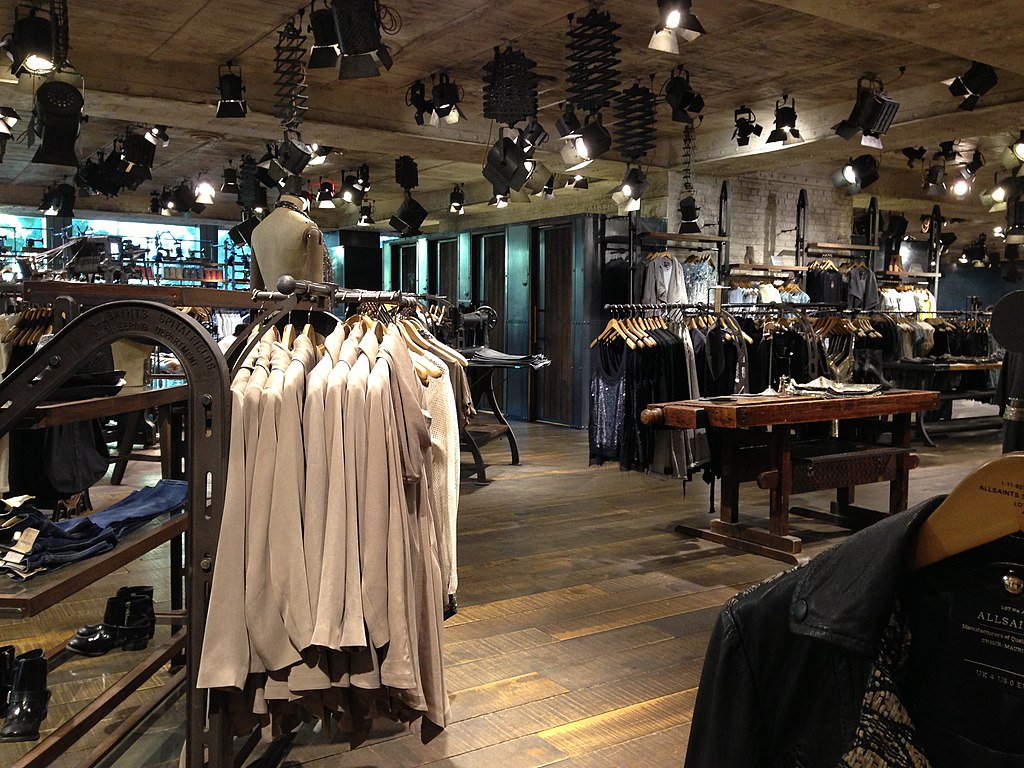
Strategically placed accent lighting can help draw attention to specific items or displays, while ambient lighting can provide an overall mood that makes shoppers feel comfortable in the space. It’s important to find the right balance between highlighting product displays and not overwhelming shoppers with too much light.
For example, you can add brighter track lighting to show off key products such as those on sale, and dimmer lighting, like wall sconces, in more low-key areas such as fitting rooms:
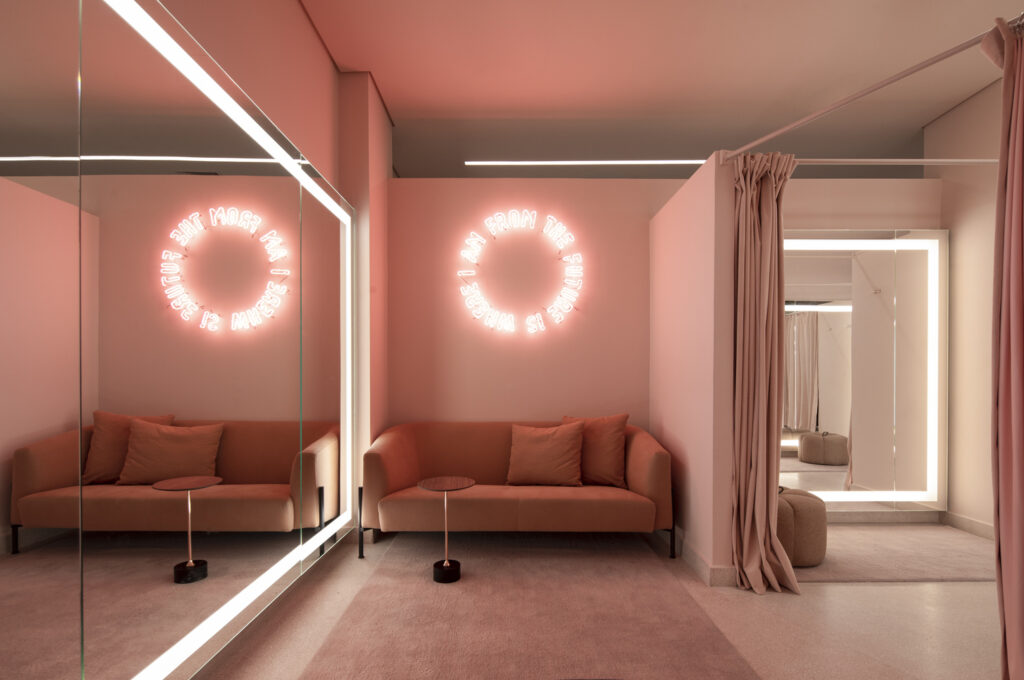
Additionally, when using different color temperatures, try to keep them consistent throughout the store so as not to distract from the overall design. Generally, the color temperature range for retail should be between 2700K and 4000K (see tip five below for more on color temperatures). Using light sources with high CRI (color rendering index) values of 90+ is also critical to show products accurately.[2]
Use ambient lighting to set the mood
Effective ambient lighting in a retail store should be just bright enough to illuminate the products while still providing a comfortable atmosphere. It should neither wash out colors nor make items appear too dark or dull.
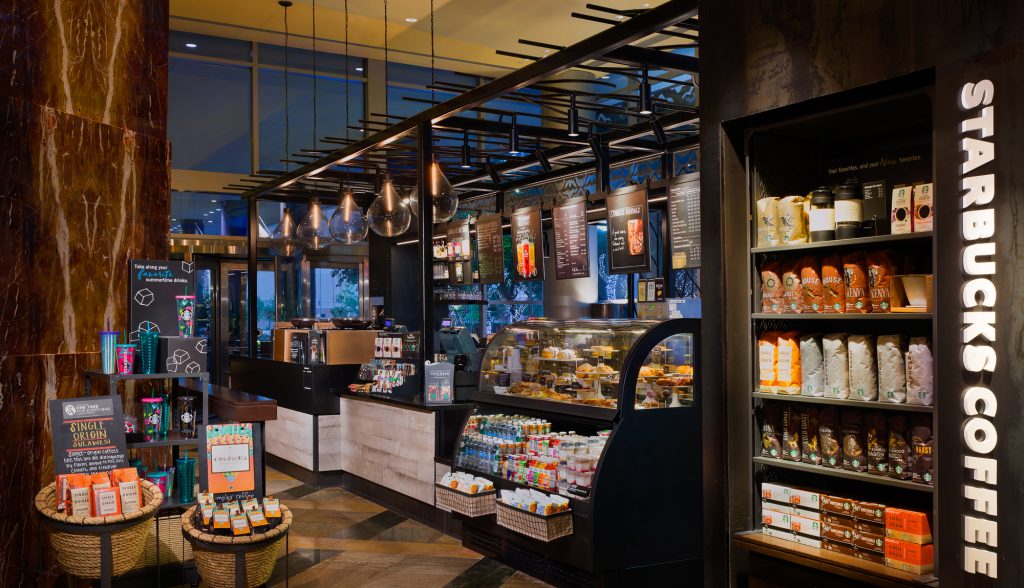
For general circulation and ambient lighting in a retail space, a 20-40 fc (footcandle) target illumination on the floor is appropriate. General retail displays usually require at least 50 fc at the horizontal display height. However, special displays may require up to 100-500 fc. (IES RP-2-20, pages 51-53).[3] These contrasts in light levels create a visual hierarchy that is effective for presenting retail products.
Use recessed lighting, track lighting, wall-mounted fixtures and decorative ceiling lights to create an inviting ambiance. Then focus task lighting on one or two areas of the store where shoppers need more direct light, such as customer service desks or checkout counters.
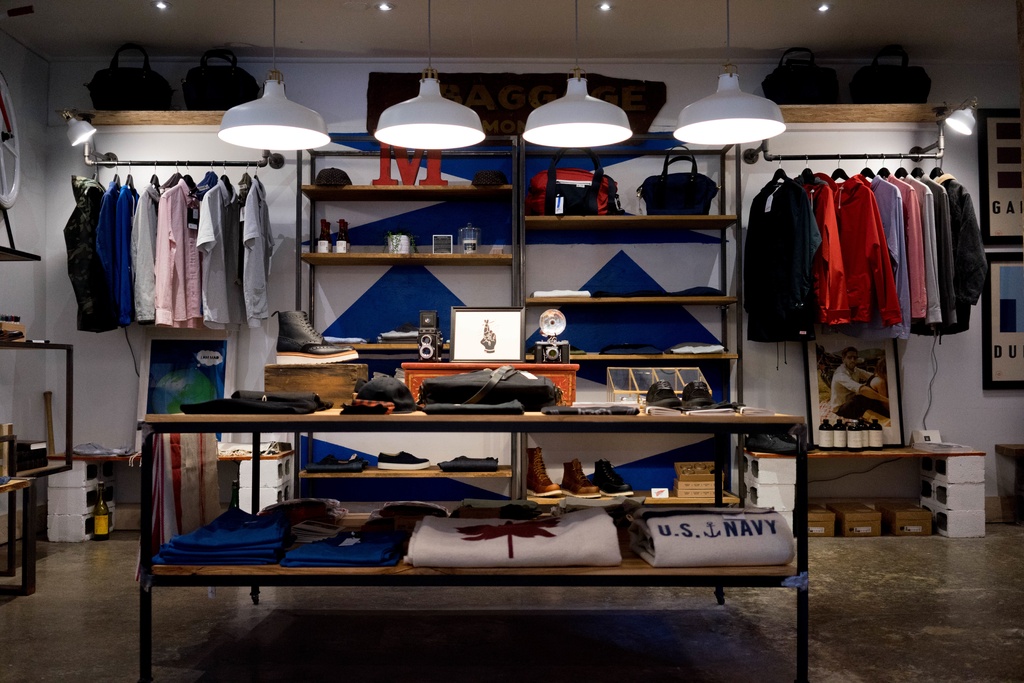
The careful selection and installation of ambient lighting illuminates a retail space in a way that makes all products shine. Find lighting fixtures that complement a store’s style and develop the brand (RP-2-20, page 1).[3] Retail lighting concepts may be more discreet, voluminous, or crafty and decorative, depending on the concept you are trying to achieve.
Plan lighting for the uniqueness of the space
Planning for the unique needs of a space is important for effective retail lighting design.
When considering different lighting options, consider the size and shape of the store and the type of products on display. How big or small is the space? What is the merchandise? Where are the light fixtures located? Are there too many different fixtures or are they randomly placed throughout the space? If so, this can cause visual chaos.
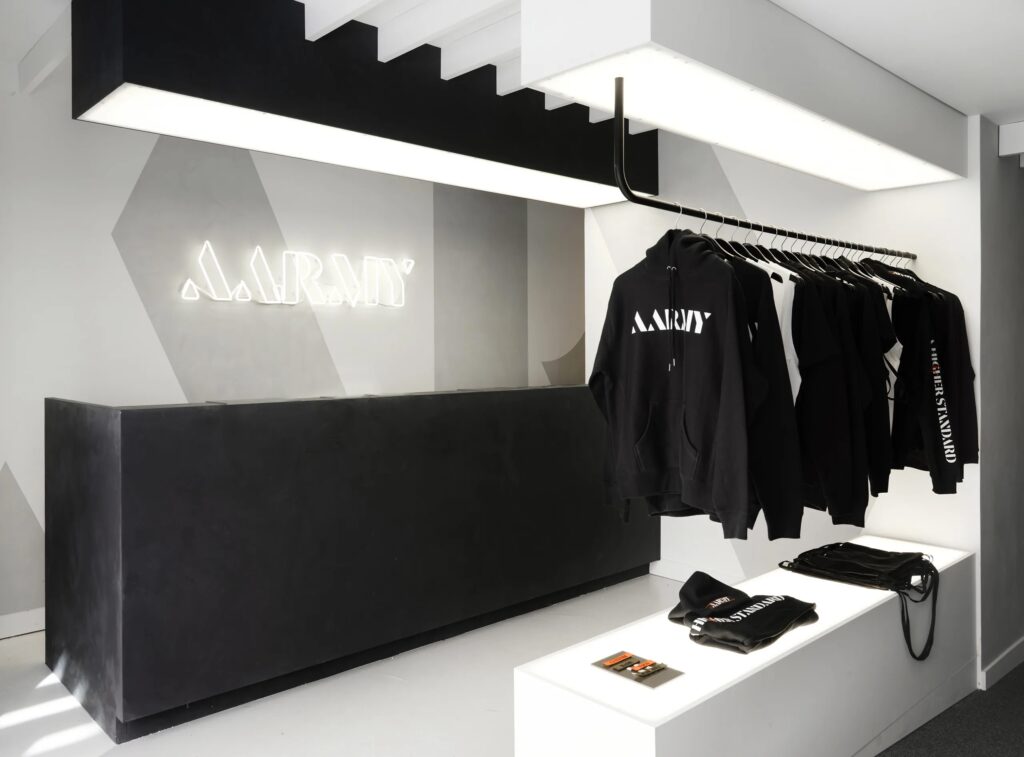
Minimize visual chaos by:
- Vary brightness levels to better emphasize certain products and avoid putting lights at the same level throughout the store
- Install volumetric lighting, which casts a wide cone that provides general lighting
- Position lights to enhance a product’s presence without washing out its color or details
- Use adjustable recessed lights or track lighting, which helps the lighting scheme remain versatile
- Choose fixtures that complement interior decor and the overall aesthetic of the store
- Avoid glare and veiling reflections from light sources
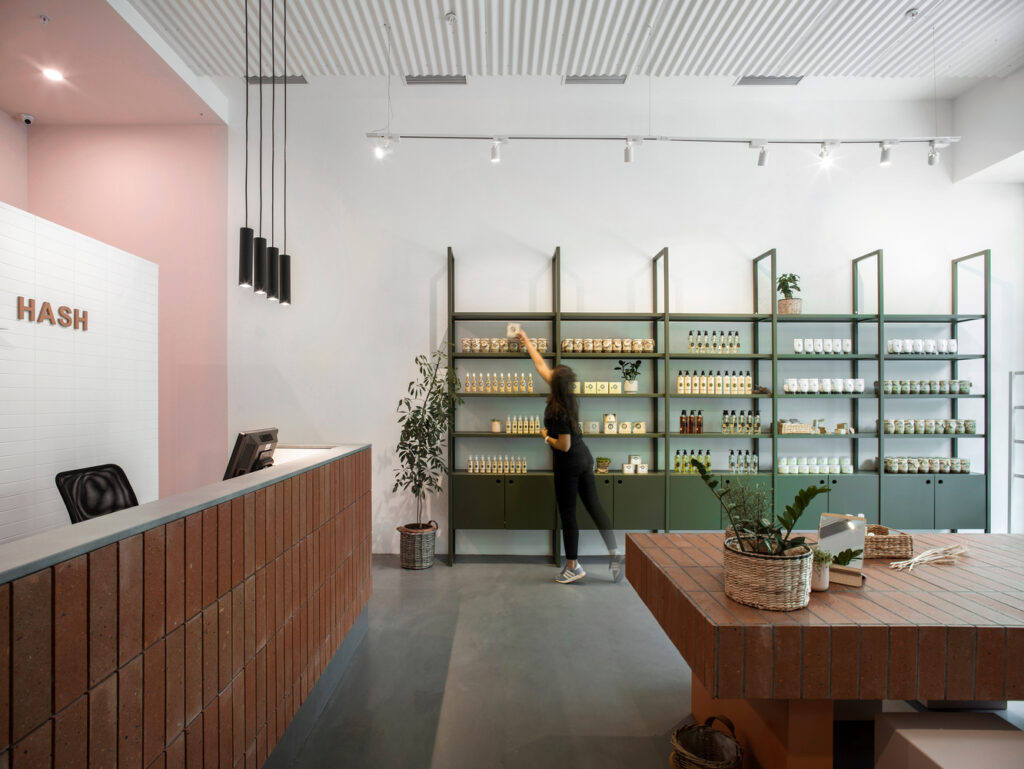
Glare occurs when a significant amount of light from a source is directly visible. To mitigate glare, use small aperture downlights and track lighting, as shown above.
Pay attention to texture in retail lighting
Texture is essential in retail lighting design, helping to set the tone of a space and creating visual interest.
For instance, when selecting materials for a store’s ceiling, avoid shiny surfaces or dark finishes — which reflect ceiling light — as they can be distracting or visually disorienting. Instead, use matte surfaces, which help diffuse the light and create a warm ambiance throughout the space.
Additionally, use textures to add depth and dimension to products on display by highlighting their features. When the lighting is more diffused, the texture of the lit object is less accentuated. Conversely, when directional light creates shadows and, thus, texture. When choosing LEDs—commonly used in retail applications, especially for displays—select a diffuse lens for a light source to reduce reflecting glare.
Veiling reflections occur when a light source’s illumination bounces off of a reflective surface into a person’s eye. To avoid this, analyze the angle of incidence to reveal how light will reflect. When illuminating a display case behind glass, angle all lighting toward the product but away from the consumer. Downlights can also create unwanted glare through veiling reflections and require similar consideration. In addition, avoid overly illuminating materials that refract light, such as glass or plastic. Otherwise, glare will also occur. (RP-2-20, page 5.)
To create comfortable yet attractive lighting, hide light sources from the consumer’s direct view. Hidden or discreet light sources can produce focal lighting that makes product areas stand out.
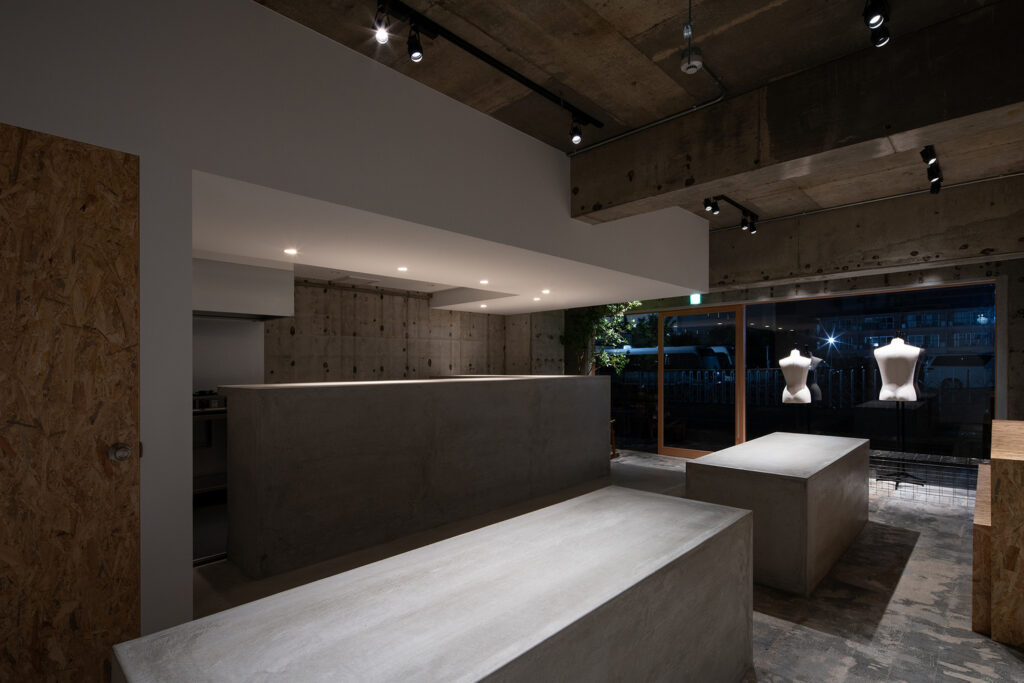
Remember these tips to create texture:
- Frosted glass fixtures diffuse the light and create a warm, inviting atmosphere
- Track lighting highlights product features and creates visual interest in small areas
- Recessed lights placed around displays draw attention to products without being too overpowering
- Accent lighting with directional spotlights emphasizes the texture in textiles and other materials
- Uplights provide soft, indirect lighting and create a warm ambiance throughout the space
Depending on the store’s retail brand identity, choose to keep ambient lighting discreet or voluminous, but stay consistent. When desiring a bright voluminous space, be sure to illuminate the walls sufficiently, usually 20-50 fc. When lighting a product wall, 75-100 fc is suggested (IES RP-2-20, pages 51-53).[3] Some retail spaces may apply fully lit wall lighting, which would require backlit LED panels with frosted glass or other diffuse material.
Use brightness, color temperature and high CRI to enhance retail lighting
Lumen output and CRI are two of the most crucial factors to consider when it comes to shop lighting.
To create an inviting atmosphere and brighten dark corners of a store, think in terms of lumens and calculate the retail space’s square footage. For every square foot, assign a set number of lumens.
For example, to provide ambient lighting (IES RP-2-20, pages 51-53):
- Circulation at floor level needs 20 lumens
- A table or raised surface might need 30 lumens
- A workspace or a retail space could use between 50 and 70 lumens per square foot
Choosing the correct color temperature—measured in Kelvins (K)—of LED bulbs is integral to a retail space. Color temperature can create a warm or cold environment and affect how customers see products. Most retail applications should use a neutral color temperature lighting of 3000-3500K, but choosing 4000K-5000K sources can create a higher-energy environment or make certain colors pop. “The required CCT and color rendering quality will vary depending on the target market and the store concept.” (IES RP-2-20, page 36.)[3]
To produce a pure and more natural lighting effect — ideal for dressing rooms and grocery stores — consider installing 4000-4500K bulbs. Jewelry stores can use bright light bulbs up to 5000K resulting in a bluish white color.
Generally, the higher the color rendering index (CRI) of a light source, the truer or more natural the product’s color appears under that light. CRI plays an important role in retail, as a product is represented best when consumers can accurately see its colors. A CRI of 95+ is typically suitable for retail applications. Extended CRI values, such as those of the IES standard TM-30, are also helpful in selecting light sources that render colors optimally for specific settings. To bring out a product’s color, select light sources that render those colors well, through these extended CRI values.

Get smart LED lighting for retail stores
LED lighting is currently one of the most popular and versatile choices for retail because it meets most technical and code requirements for commercial spaces.
This type of lighting is energy-efficient, long-lasting and customizable to fit. LED bulbs offer superior efficiency and light output compared to traditional bulbs: A smart LED light bulb lasts for around 50,000 hours, in contrast to incandescent bulbs, which last about 2,000 hours.
LED-based smart lighting systems are an advanced type of lighting system that uses LED bulbs. The ability to adjust light intensity and color allows retailers to create atmospheres that draw customers in and encourage them to stay longer.
Smart lighting systems control, monitor and adjust lighting levels according to the season or time of day, or to focus light on particular products or areas within the store. They can also automatically dim lights when not in use, providing energy savings of up to 50 percent compared with systems using manual controls.
Retailers can use IOT lighting systems as part of their marketing strategy to spotlight specific products or promotions throughout the store at different times. Draw attention to items, such as new arrivals or sale items, without having to constantly rearrange displays or signage using motion sensors and programming patterns.
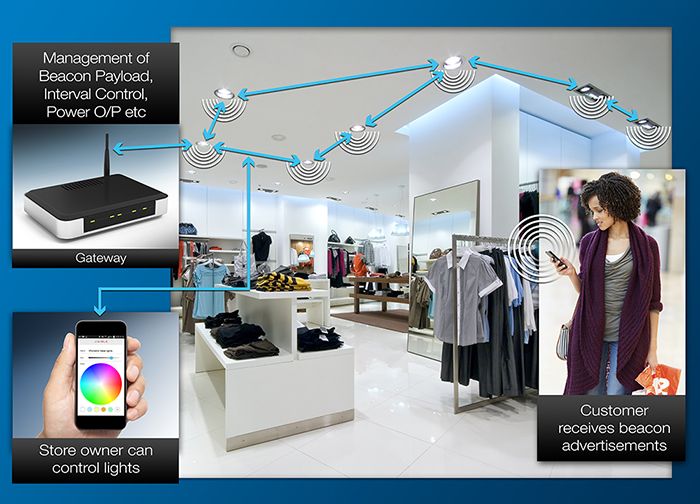
For consumers, smart lighting provides a customized and convenient in-store experience. Customers can use pre-populated shopping lists and turn-by-turn navigation via their smartphones’ Bluetooth to find items they need. They can also get location-based notifications about relevant sales and other savings based on their shopping history.
For retailers, smart lighting offers a better understanding of customers’ preferences and needs. By using the data collected by smart lighting systems, retailers can improve in-store product placement, inventory levels and employee-customer interactions.
Smart lighting controls are also helpful when balancing artificial lighting with daylighting, as many stores have large-windowed storefronts.
Furthermore, smart LED lighting and control systems can also use dynamic lighting that changes color (through RGB sources), to create an exciting environment.
Flatter the customer with dressing room lighting
When it comes to the lighting for retail dressing rooms, it is crucial to create a pleasant and inviting atmosphere.
This is the most important space in a clothing store. When a shopper enters the fitting room, the chance of them buying the clothes they’re trying on increases from 10 to 67 percent – if the customer likes what they see. Harsh dressing room lighting can hinder sales.
First, understand which types of lighting not to use in a dressing room:
- Overhead lighting: Ceiling-mounted lighting creates unflattering shadows on the face and the body, highlighting one’s worst flaws
- Fluorescent lighting: Fluorescent lighting in the dressing room leads to flickering light on the face, which can make the face look green
To summarize, avoid lighting with poor color rendering, overhead, fluorescent or halogen lighting as this will create harsh shadows and unflattering colors.
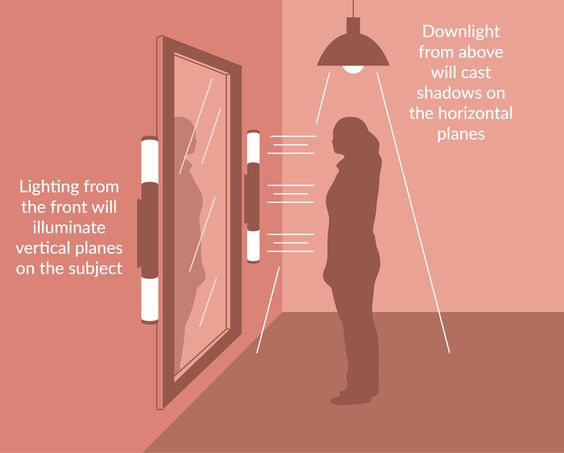
What works best for fitting room lighting? Soft, diffused light from indirect sources will provide flattering illumination that’s easy on the eyes, compliments the shopper’s physical form (i.e. no unflattering shadows) and allows them to see what they are trying on. In dressing rooms, select light sources with a strong R9 value (Red color from TM-30) to render warmth in skin tones, which makes people and clothing look best. Lastly, avoiding heavy glare from direct light is helpful for creating a comfortable dressing room environment. For more details on dressing room lighting, review our guide.
Conclusion
Balancing layers of light (ambient, accent and task) is essential for a retail space. Complement high general illumination with focal lighting to guide consumers through the space. Add decorative and accent lighting to catch consumers’ attention and highlight products. Selecting the appropriate color temperature and high CRI light sources, and pay close attention to glare and materials to make retail lighting successful.
Sources
[1] National Center for Biotechnology Information. Why Is There So Much More Research on Vision Than on Any Other Sensory Modality? [2] Arius. The Importance of CRI in Retail Colour Rendering Index. [3] Illuminating Engineering Society. IES Recommended Practice: Lighting Retail Spaces.
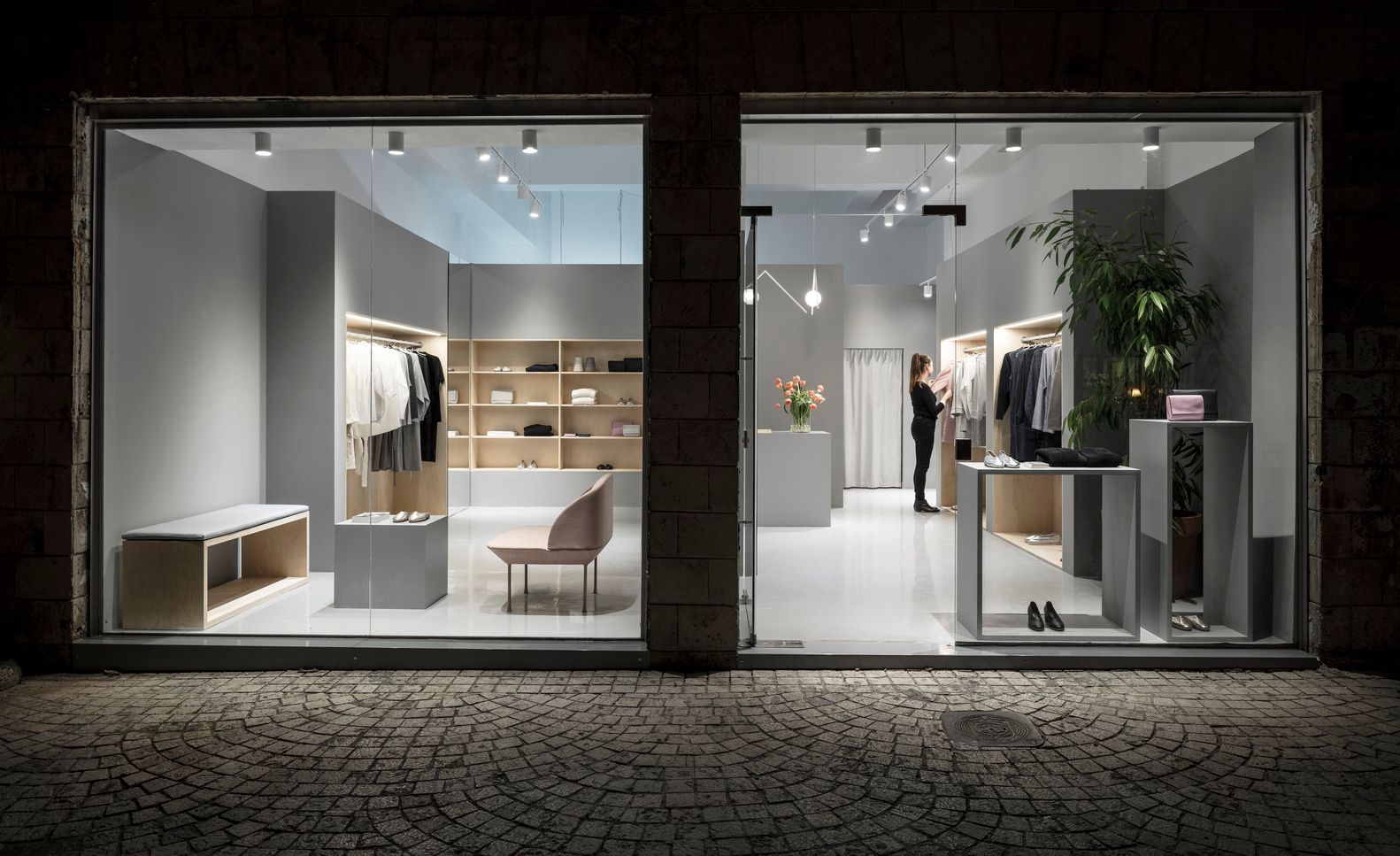
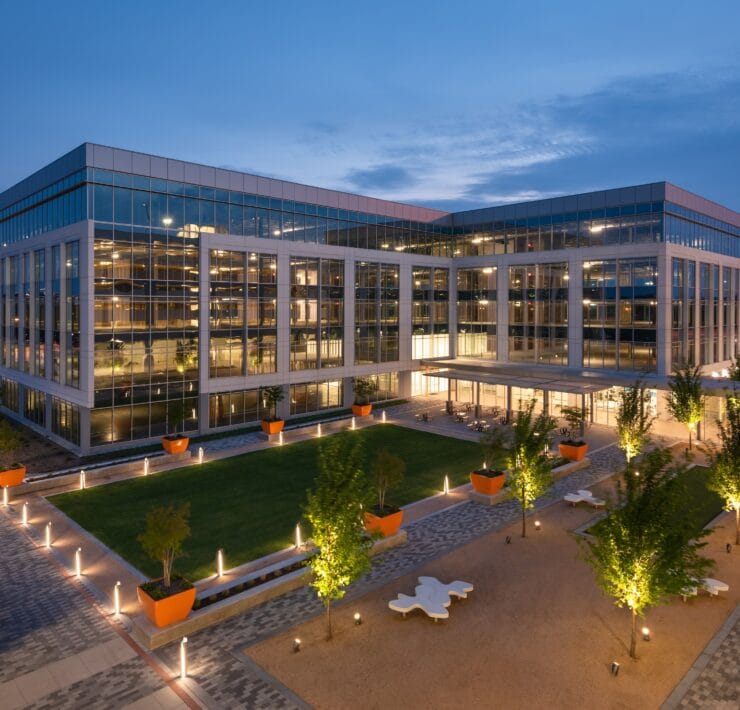
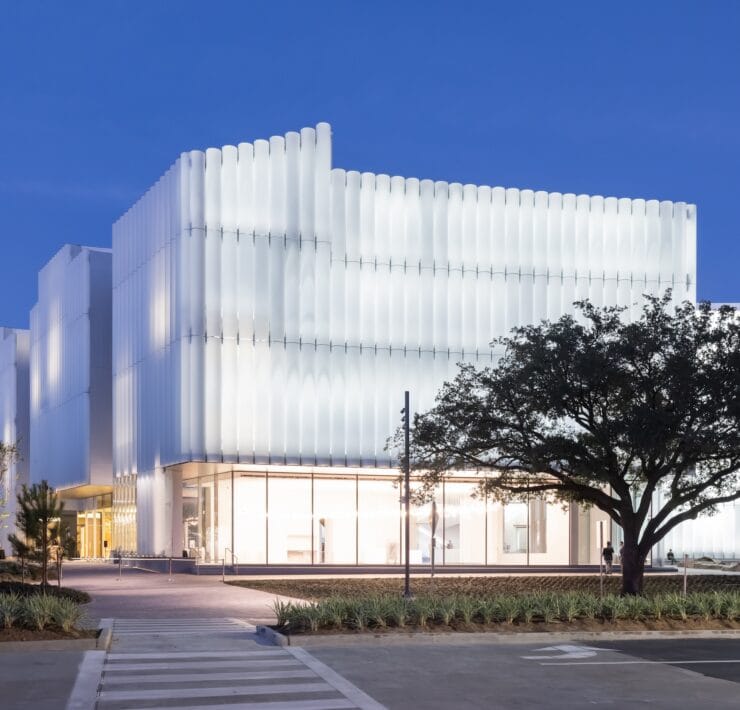
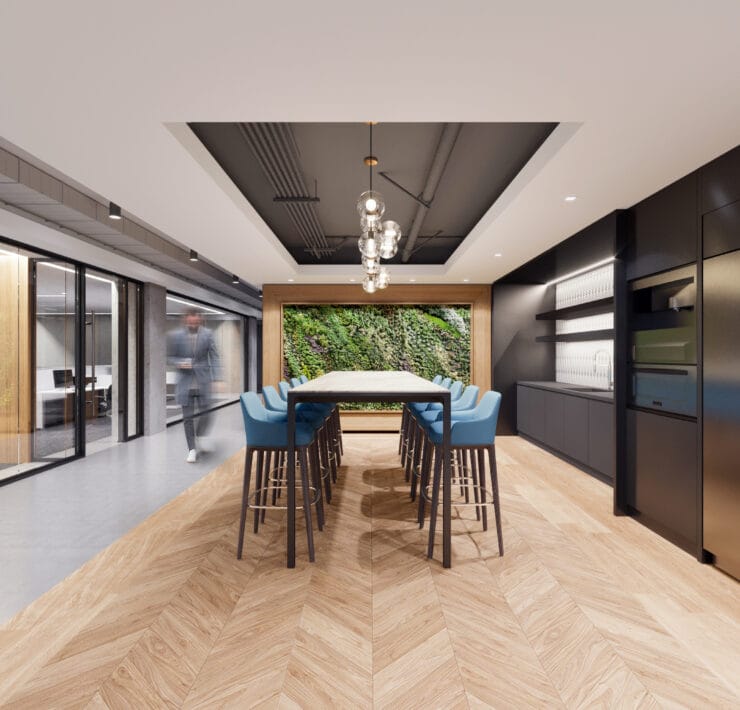
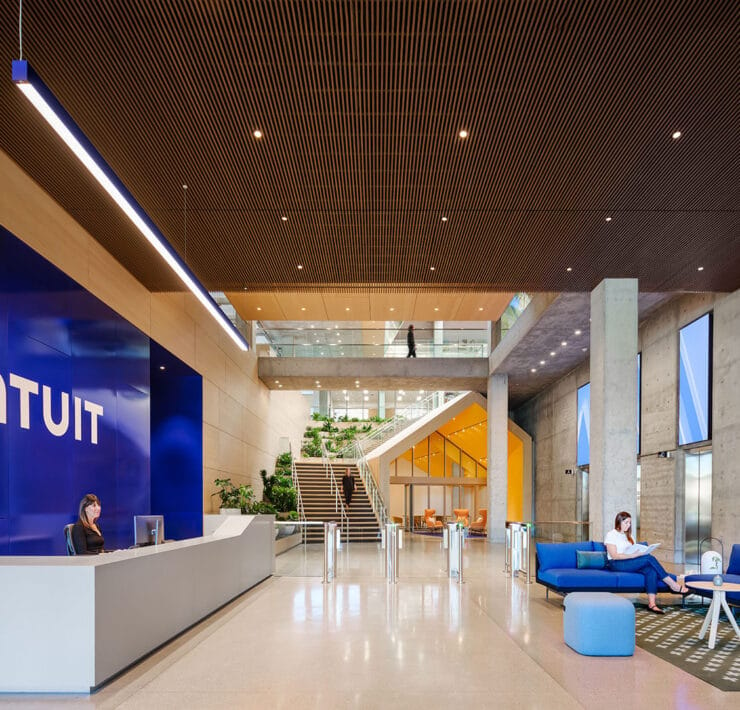
[…] and design efforts, see if cost-effective solutions might work. A simple change in-store lighting, for instance, can refresh your look without needing a full store […]
[…] Retail Lighting: Five Best Practices […]
[…] Retail Lighting Best Practices: 7 Ways to Optimize Your Store’s Lighting Design Plan […]